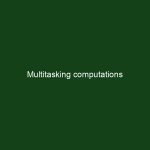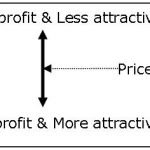Recently I was asked a strange question “How do you read something you are not interested in remembering?”. Originally I dismissed the question as unreasonable, but after some analysis I decided that the question is very good and deserves a proper response. When constructed this course we focus on people reading the material in order …
Getting stuck with visualization
About 1% of our students get stuck with visualization. They either cannot get into the visualization mode and see pitch black, or they cannot get out of visualization mode and experience vivid hallucinations. In both cases, they need to address this course creatively. If you have trouble getting into visualization, this may mean that your …
Advanced memorization exercise
Many of you have wondered how to memorize abstract notions. I suggest to do this together. Take this article. It should be important for virtually any superlearner, since it explains why smart people make mistakes. Now, use your markers skills to remember everything in the article. Take your time – there are many markers to …
Controlling dimensionality of your markers
When we discuss “visual markers” we address some objects that can be processed by the right hemisphere of one’s brain. In fact the distinction between the “left brain” and the “right brain” is not very clear, and visual markers take many forms. By controlling the dimensionality of your visualization you control a complex trade-off between …
Continue reading “Controlling dimensionality of your markers”
Multitasking computations
It is notoriously difficult to multitask. In this exercise you calculate the sum of the numbers of the same colour e.g. red with red, green with green. The idea is to keep in your head outputs of previous computations per colour, and update them with each new result.
High-level chunking
High-level chunking allows to operate with up to 80 object in your working memory, using computer-like data structures. Since the size of working memory is correlated with IQ, this actually make you smarter. When dealing with large amount of information you may choose several strategies to encode it. High level visualization is probably the most …
Memorizing music
Many of our students ask how to memorize music. I am not an expert in this area. Once I produced a disc with jazz songs I wrote, but this is the closest I got to working with music. So I made a short research into what other people suggest. As everybody else I suggest to …
Creating and using stylized markers
This is a basic and deep post that could be added to the course. It requires a bit more time and effort than a regular post on this site. I do suggest to visit all the links within and think about integrating it in your superlearning skillset. During the course we teach our students to …
Remembering multiple objects
One of the key exercises in making markers is remembering multiple objects. We have several ways of representing the object that need to be remembered and several strategies to address the memorization task. The task is very similar to remembering several markers scattered across multiple unrelated sources. The subject is being addressed in various forms …
Making markers for the new stuff
When creating mental markers for the concepts we do not have generic markers for, we need to balance the generic nature of a marker with ability to generate and retain specific markers. The visual markers we use are actually very specific and have a lot of details encoded into them, but these details are not …







